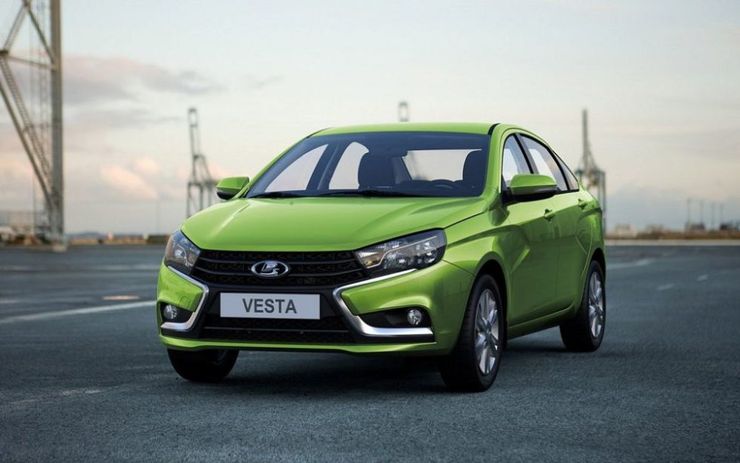What problems will disappoint the used LADA Vesta
- January 5, 2023
- 0
The Vesta family is now the most modern in Togliatti. And have the release suspended due to known issues. There are plenty of pre-reform sedans and station wagons
The Vesta family is now the most modern in Togliatti. And have the release suspended due to known issues. There are plenty of pre-reform sedans and station wagons

The “four-door” LADA Vesta appeared in 2015 and replaced the aging Priora model. In 2017, Togliatti showed a station wagon and demand for it also began. Now the mileage of many copies has passed 100,000 km, so we can talk about weaknesses in the design.
Let’s start with the body. The paintwork is quite thin and you can see that on the front bumper. After a few years it’s all covered in chips. But rust on the hood and fenders is rare. Only the roof is not galvanized. Therefore, the traces left by stones and sandblasting on it must be checked.
As for Steve Mattin’s X design, it looks classy. But after an accident, it is rather difficult to straighten body elements with a complex pattern. In most cases, they are changed, which significantly increases the cost of repairs.
The side windows of sedans and station wagons are very “soft”. They quickly become covered in scratches. Rigid seals also contribute to this.
The 1.8-liter gasoline engine with 122 hp turned out not so frisky, and it also likes to “eat” oil, so you need to keep an eye on the level. This is surprising, because LADA engines have never been distinguished by increased “oil consumption”. To the factory’s credit, we note that engineers have eliminated this nuisance on more recent models.
The manual transmission is not satisfactory, but only the lazy did not criticize the “robot” with one clutch. Shocks when shifting were common after 7000 km. So we do not recommend considering the “robot version” for purchase. Better “mechanically” or with a variator. But it all depends on the nature of the previous owner. When driven, the CVT can be very “shabby”.
There are also comments about the suspension. Vesta was often scolded for creaking stabilizer bushings. Car owners, followed by dealers, lubricated the parts, but this did not solve the problem for a long time. In later versions, the plant managed to “cure” this “ailment”. But still not 100% successful. So far there are drivers who are not enthusiastic about rubber bands.
The exhaust system often fails. The corrugation quickly rusts and can burn out at the most inopportune moment. Then the car will “scream” and you urgently need to go to the service.
The plant put a lot of effort into “Vesta” and saved it from many “teething problems”. So the best option would be a car in 2018 and under. It is already devoid of most “styles”.

The “four-door” LADA Vesta appeared in 2015 and replaced the aging Priora model. In 2017, Togliatti showed a station wagon and demand for it also began. Now the mileage of many copies has passed 100,000 km, so we can talk about weaknesses in the design.
Let’s start with the body. The paintwork is quite thin and you can see that on the front bumper. After a few years it’s all covered in chips. But rust on the hood and fenders is rare. Only the roof is not galvanized. Therefore, the traces left by stones and sandblasting on it must be checked.
As for Steve Mattin’s X design, it looks classy. But after an accident, it is rather difficult to straighten body elements with a complex pattern. In most cases, they are changed, which significantly increases the cost of repairs.
The side windows of sedans and station wagons are very “soft”. They quickly become covered in scratches. Rigid seals also contribute to this.
The 1.8-liter gasoline engine with 122 hp turned out not so frisky, and it also likes to “eat” oil, so you need to keep an eye on the level. This is surprising, because LADA engines have never been distinguished by increased “oil consumption”. In credit to the factory, we note that engineers on more recent models have eliminated this nuisance.
The manual transmission is not satisfactory, but only the lazy did not criticize the “robot” with one clutch. Shocks when shifting were common after 7000 km. So we do not recommend considering the “robot” version for purchase. Better “mechanically” or with a variator. But it all depends on the nature of the previous owner. When driven, the CVT can be very “shabby”.
There are also comments about the suspension. Vesta was often scolded for creaking stabilizer bushings. Car owners, followed by dealers, lubricated the parts, but this did not solve the problem for a long time. In later versions, the plant managed to “cure” this “ailment”. But still not 100% result. So far there are drivers who are not enthusiastic about rubber bands.
The exhaust system often fails. The corrugation quickly rusts and can burn out at the most inopportune moment. Then the car will “scream” and you urgently need to go to the service.
The plant put a lot of effort into “Vesta” and saved it from many “teething problems”. So the best option would be a car in 2018 and under. It is already devoid of most “styles”.
Source: Avto Vzglyad
Donald Salinas is an experienced automobile journalist and writer for Div Bracket. He brings his readers the latest news and developments from the world of automobiles, offering a unique and knowledgeable perspective on the latest trends and innovations in the automotive industry.